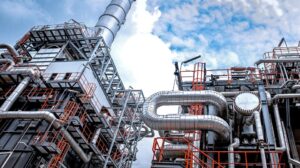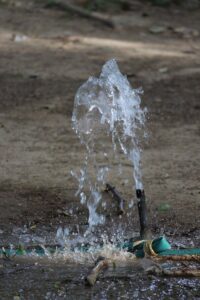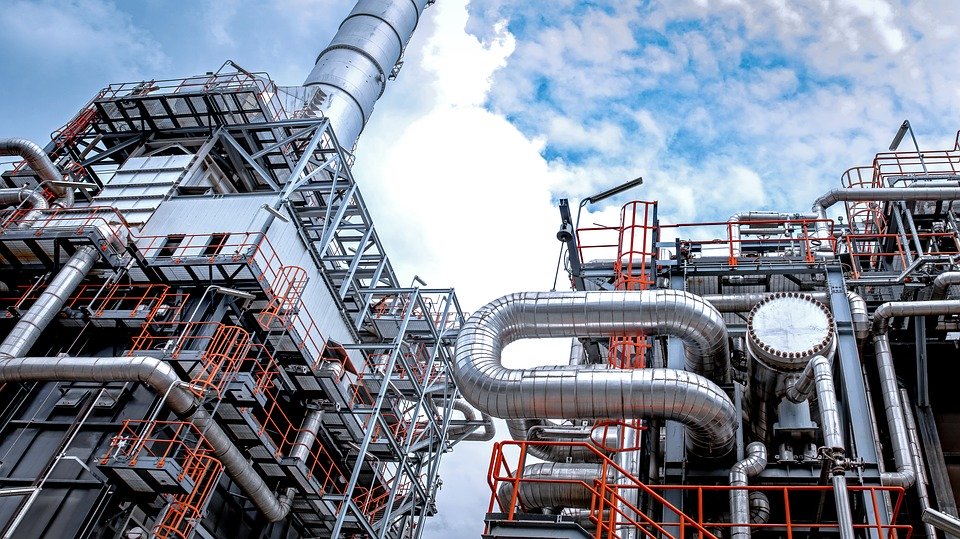Before preparing a water supply plan for any town or city, it is very important for the engineer to do a physical study of water requirement i.e. types of consumption, estimation of number of consumers and calculation of corresponding amount of water (supply) and other factors related to consumption etc. In addition to water supply, it is important to study the quality of water received, to study its impurities and to carry out various necessary tests for its prevention or purification and to maintain proper standards of water quality used by the public.
Typ
Before the design of the Water Supply Scheme Daily, Monthly as well as Total yearly usage and fluctuations in this consumption throughout the year have to be determined. But first of all we need to know what kind of water will be used. Determining actual water consumption is not entirely possible, but based on certain empirical formulas and experience, different types of water consumption can be shown as follows:
1. Domestic Demand
2. Commercial and Industrial Demand
3. Fire Control Demand Public Loss
4. Demand at Public Places
5. Other Losses or Wastage.
1) Domestic Demand
Domestic use of water i.e. for drinking, bathing, washing clothes, cleaning of house and toilets etc. as well as water consumption for cooking.
Generally household consumption of water depends on the following factors:
– Personal habits of people
– Social status of individual
-Local climatic condition
-Customs of the local people
In our country India 135 liter/ day per person is considered essential water . While in developed countries this ratio is around 350 lit / day / capita.
The reason behind this difference is the comparatively high water consumption in modern facilities of developed nations such as air-condition equipment’s , air-coolers as well as other equipment’s.
Generally about half (50%) of the total daily amount of water is spent on household consumption.
2) Commercial and Industrial Demand:
Commercial or industrial places include private as well as public entertainment places, hotels, offices, shopping centres as well as manufacturing places like factories and factories etc. The water supply of the water supply scheme should be designed keeping in view the consumption of about one-third of the total water consumption in this type of consumption.
 |
Such usage depends on the structure of the city and its business development as well as the development of the population and the area.
3) Fire Fighting Demand
Fires usually occur in densely populated areas or in industrial estates or factories. Fires cause severe damage to property and sometimes even loss of life. There are many causes of fire such as explosion of electrical short circuit ammunition, fire in flammable substances or chemicals, intentional arson by criminal elements as well as fire as a result of an accidental mistake.
Fire brigades or fire fighting squads are deployed in every city or municipality for fire fighting. Therefore, special water mains as well as fire hydrants are installed on the main water lines to control the fire from where the required water is obtained.
Generally 5 to 10 percent of the main water supply is reserved for firefighters. This quantity for firefighting is calculated using the following empirical formulas:
A)National Board of fire underwriter’s formula
Q = 4637 P (1 -0.01 VP )
where
Q = required amount of water in liters/minute
P = city population in thousands
B)Kuiching Formula:
Q = 3182 / P
C)Freeman’s Formula:
Q = 1136.51(p/10 +10 )
(D) Buston’s Formula
Q = 5663 / P
Kuchling’s formula corresponds to the position of our country and gives satisfactory results.
4) Public Demand
Public use of water in public places such as hospitals, schools, colleges, town halls, places of worship, prisons, inns, etc. as well as sprinkling of water on public roads, watering of gardens, cleaning of sewers and drains, decoration. Includes water required for public fountains etc.
Generally, 7 to 10% of the water supply is allocated for public consumption.
5) Demand for Other Losses and Wastage:
The amount of water distributed from the water supply scheme does not reach 100% to consumers

The main reasons for this are as follows
(A) Defective pipe joints
(B) Cracks in pipe lines
(C) Breakage in pipe lines
(D) Faulty valves and fittings
(F)Loss due to carelessness of consumers
(E) Water theft due to unauthentic connections
The cost is assumed to be about 15% when calculating the water supply for the above minor reasons.
Computation of Quantity of Water :
When designing a water supply scheme for any city, that city has to calculate the amount of water required. For this, first of all, the individual quantity is calculated based on the population of the city.
This calculated quantity is known as “per capita water demand”.
Per Capita Demand:
Generally the required amount of water per person per day is known as “Per Capita Demand”.
The following formula is used to calculate this:
Daily water consumption per person
=Q/ 365 P (liters / man / day)
where
Q = Total water requirement (in liters) throughout the year
P = The population of the city
water consumption rate unit is Ipcd (liter per capita per day).
Analysis of Rate of Demand for Water Consumption:
Considering the approximate figure of the population of any city from this,
The daily water volume of that city
= 270 x population figure
= 270 x P liters / day (P = Population)
and hence the amount of water required throughout the year
Q = 270 x 365 x P liters.
According to Indian Standard Code Is: 1172-1971, any city in our india water required is 135 liters of water per person per day.
Fluctuation In Demand
(i) Hourly fluctuation in demand at different times of the day
(ii) Daily fluctuation in different days
(iii) Seasonal fluctuations (water consumption according to different seasons)
(i) Fluctuations in water consumption at different times of the day:
Observing the daily consumption of water reveals that the consumption is not the same all the time throughout the day.
From 7.30 am to about 10 am, maximum water is used for bathing, washing clothes and cooking.
Consumption is then very low from 12 noon to 4 pm. This is followed by a slight increase in re-consumption in the evening and is usually stopped from 11 pm to 4 am.
In this way the fluctuations in water consumption throughout the day can be seen from the graph shown below.
Pick hours are usually 1.5 times more than average consumption.
(ii) Daily Fluctuation:
The rate of water consumption is not always the same i.e. every day.
It depend on Climate variation, holidays as well as certain festivals or fairs, public celebrations, etc.
During the days of any city or area water consumption is high. Water consumption is higher on dry days than on rainy days.
In the same way, people use more water for bathing and washing clothes on Sundays or holidays than on other days.
In addition, fire as well as whirlwind days consume more water.
Observations It can be said from above that the consumption of the days with maximum consumption than normal days is assumed to be about 200% i.e. twice.
(iii) Seasonal Fluctuation:
The rate of water consumption varies from season to season and from month to month.
The summer season uses much more waterfor bathing, drinking, washing clothes and cleaning houses than other seasons.
In the same way water consumption is very low on very cold days. Consumption rates vary from season to season.
As the average daily consumption in normal days is 120 liters which goes up to about 100 to 180 liters in summer season while in winter it drops drastically to 70 to 80 liters.
Thus the weather and temperature of each season have an effect on water consumption. Therefore water supply pipelines and mains are designed keeping in view the maximum consumption rate.
Factors Affecting Water Demand
Their are Many factors affect the rate of water supply or water demand, some of the major factors can be shown as follows
(1) Climate Or climatic condition
(2) Habits and living standard of people
(3) Water supply arrangement
(4) Sanitation system
(5) Population of the city
(6) Developmental pattern of the town
(7) Metering system
(8) Pressure in distribution system
(9) Quality of water
(10) Industrialization
(11) Cost of water
(1) Climate Condition
In hotter and drier climates, the demand for water for air conditioning as well as bathing and other cleaning is higherthan in colder regions.
(2) Habits and living standard of people / consumers:
The type of standard of living of the consumer class has a great impact on water consumption. As resource availability increases, water consumption increases.
(3) Water supply arrangement:
Water supply arrangement i.e. if water is supplied at fixed times or at certain intervals during certain days instead of continuous distribution of water for the whole day, water consumption will be done properly and economically depending on the amount of consumption Can be controlled.
(4) Sanitation system:
The type of sewerage system of any city or town has a great influence on the demand for water. As the sanitation system develops, the rate of water consumption for its devices increases.
(5) Population of the City / Town:
Generally small towns have low water consumption rate. While in big cities the rate of water consumption is high due to the development of sanitation system and industries. The rate of population directly affects the rate of water consumption.
(6)Developmental pattern of the town
Water consumption also depends on how the city is located. Different patterns of city habitation affect its pipeline system. The water-distribution system of a city inhabited with a tangled pattern also has a lot of confusion and expense. Consumption is controlled in low-cost cities due to lower costs.
(7) Metering system:
Water charge is determined by the water supply department in each city. In cities where water consumption charges are levied at a flat rate, the rate is higher by both the people and the distribution system.
But if the meter system is adopted for this charge, the unnecessary expenditure of water by the citizens is very less. In addition, leaking water can also be controlled.
(8)Pressure in distribution system:
The pressure of water distribution system has a direct effect on water consumption. As the pressure increases, the rate of distribution increases and so does the consumption.
(9)Quality of Water:
If the water supplied to the people is of high quality then the interest of the people towards it increases and its consumption also increases. If water quality is poor, people are reluctant to consume it and it reduces overall consumption.
(10) Industrialization :
In cities where industrial development is high, the demand for water also increases due to industrial purpose and as a result water consumption also increases.
(11) Cost of water:
The cost of water has a direct effect on its consumers. This means that as water becomes more expensive, its consumption decreases. Conversely, where the cost of obtaining water is lower, its consumption increases.
I Hope You Like Our Article “Water Demand , Its 5 Types And 11 Factor Affecting Water Demand of City “ Don’t be Cheap To Share This Article with your Friends.
- Innovation in Civil Engineering “solar roadway”
- How to solve any structural beam in smartphone within 2 minute ?













